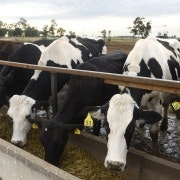A tapering growth trajectory will test CBA
Commonwealth Bank has produced another very solid and clean result. There were, however, definite signs of a tapering in its earnings trajectory in the second half.
What had been very strong income growth in the first half flat-lined in the second half, which translated to a decline in cash pre-tax earnings growth from the 12 per cent CBA generated in the December half to 1 per cent growth in the June half despite very strong cost control.
The second half was also impacted by a pick-up in bad and doubtful debt charges. Having fallen 12 per cent in the first half they rose nine per cent in the second, although they remain at historically low levels.
The biggest influences on that second-half experience were a 9 per cent fall in business and private banking profits and a 13 per cent decline in the earnings of CBA’s institutional banking and markets division. Bankwest, which grew its earnings by 21 per cent in the first half, also suffered a 7 per cent decline in the second six months.
Overall, however, Ian Narev and his shareholders would be happy with another record result and the 12 per cent growth in cash earnings for the year, given that the external environment and the demand for credit haven’t been buoyant.
He’d be particularly pleased that CBA demonstrated very good cost discipline, which showed up in a very slight decline in operating expenses in the second half and an overall cost-to-income ratio that fell 70 basis points to 42.9 per cent.
The retail bank also performed well in a very competitive environment as CBA held market share in home lending, with its earnings rising 12 per cent. Other strong performances were produced by wealth management (up 17 per cent) and New Zealand (up 19 per cent).
The strength of the first half performance, during which CBA grew its interest earning asset base 7 per cent to $705 billion and respectable growth of 4 per cent in its lending in the second half, provided solid volumes to underpin the result and the 8 per cent increase in net interest income.
CBA was also able to hold its net interest margin at 2.14 per cent, with lower funding costs offsetting lower home loan margins. Its return on assets was steady at 1.1 per cent.
The group is strongly capitalised, with a Common Equity Tier One ratio of 9.3 per cent (which CBA says is equivalent to an internationally harmonised ratio of 12.1 per cent) but was still able to produce a sector-leading return on equity of 18.7 per cent, 50 basis points higher than the previous year.
There are question marks over whether CBA can sustain that level of profitability. While Narev was "cautiously positive" about the outlook, the economy is brittle (as are consumer and business confidence); the global environment is full of uncertainties and risks; and the stalemate in Canberra over the Abbott government’s first budget has not been helpful.
The size and record nature of the CBA profit will inevitably draw the usual attacks from the usual sources about the excessive profitability of the major banks. It's a potentially dangerous issue for the major banks given not only the backdrop of the current Financial System Inquiry but the recent and continuing controversy emanating from the behaviour of CBA’s financial planners and the class actions over bank fees. The majors are relatively soft targets at present.
Apart from the fact that CBA’s net interest margin and its return on assets were flat, the scale of the numbers has to be seen in context. CBA now has total assets of more than $790bn and shareholders’ funds of nearly $50bn. It is a very large institution, as are its peers, so inevitably their numbers are going to be large.
CBA’s return on equity is the sector’s best and would rate up there with any major bank in the world. However, it is well below the 20 per cent-plus levels achieved before the financial crisis and is being driven by cost-cutting and the big fall in bad and doubtful debts rather than by any widening of its margins.
It is also worth noting that CBA, regarded as having the best technology platform of any of the majors, continues to invest heavily, with another $1.2bn of investment spending in the latest financial year. That will help drive further increases in its productivity and innovation.
The combination of the size of its earnings and returns, however, will inevitably be used against it by those who see the Financial System Inquiry as an opportunity to reduce the competitiveness of the major banks (and improve the relative competitiveness of the smaller banks and the non-banks) by requiring them to hold more capital and, perhaps, to pay explicitly for their ‘'too big to fail' status.
















